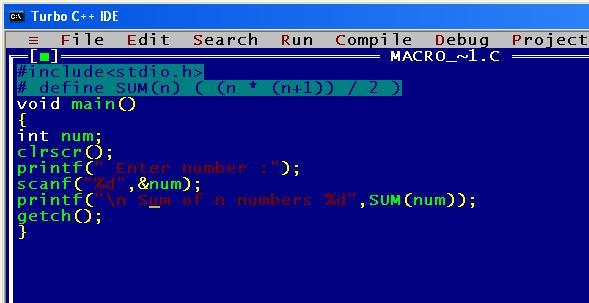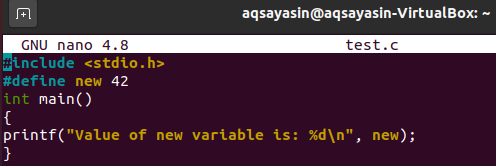


It is good practice to declare macros in upper-case alphabets in order to distinguish them from other identifiers. We use the define preprocessor directive to include C macro functions and objects in our code.
#Macro in c code#
The body of a macroi.e., the part after the macro and optional argumentsis known as the substitution list. What are Macros in C We can say that macro is a code or a set of statements that gets replaced by its value during compilation time. You can do that by using C-style comments ( /**/). C and C++ support two kinds of macros, object-like macros, which have no arguments, and function-like macros, which require arguments. MACRO (TTPMACRO.EXE) is an interpreter of the macro language Tera Term Language (TTL), which controls. This works well for small macros, but if you have a larger macro that is spread over several lines, it might be nice to put comments nearer some tricky or crucial bit of code. (C) 2004-2021 TeraTerm Project All Rights Reserved. Key takeaway: It is important to note that the macros are not terminated by a semicolon ( ) For a better understanding of Macros, it is important to understand preprocessors in C. In the C programming language, a macro would generally look like: define MACRO macrovalue. The easiest way to document macros is to just add comments before or after the macro definition: // returns the larger of the two arguments Macros are nothing but a piece of code based on the define preprocessor. This works with both C and C++ compilers. Comments are an important part of documenting your code.Īdding comments to macros is quite easy, but it has to be done the right way.


 0 kommentar(er)
0 kommentar(er)
